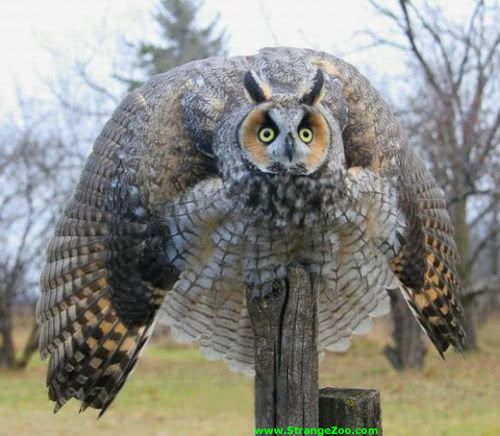NASA,
The relative size of an owl's eyes to its head/brain indicate that they have better vision than the coyote. Having said that, I recall studies that have conclusively demonstrated that owls rely more on their sense of hearing than vision in the dark. One in particular was conducted on barn owls (Tyto alba) that were placed in a large, fully enclosed structure with zero readable light. Rodents were outfitted with balls of tissue paper attached to their tails and released. The barnies were able to capture the mice on the first attempt 93% of the time under circumstances where their eyes were useless. Looking at their skulls, the auditory meatus is very pronounced in an owl as well, whereas a coyote's isn't nearly as large. (Bigger than ours, but not what I would call huge) And, with an auditory meatus, size matters. /ubbthreads/images/graemlins/smile.gif I think they can see better than us, but only because of the relative abundance of rods (versus cones) in the retinas, combined with the presence of the tapetum lucidum, the structure described by Arcticfox.
In poor lighting, i.e., new moon, they probably rely more on their hearing. Otherwise, they maintain a balance of defense using all three of their main senses (olfactory, auditory, visual). Just my .02.
Sidebar: On the subject of owls, let's play IDMe. What am I?
And NASA, you be quiet. Useless hint, in 1986, I lead the department of ornithology head from my alma mater to a cedar grove where I recovered a nestling aged - one of these and which turned out to be the first recorded instance of this species nesting in Kansas. He told me I was crazy when I told him I had a young one. Who's crazy now?!?


